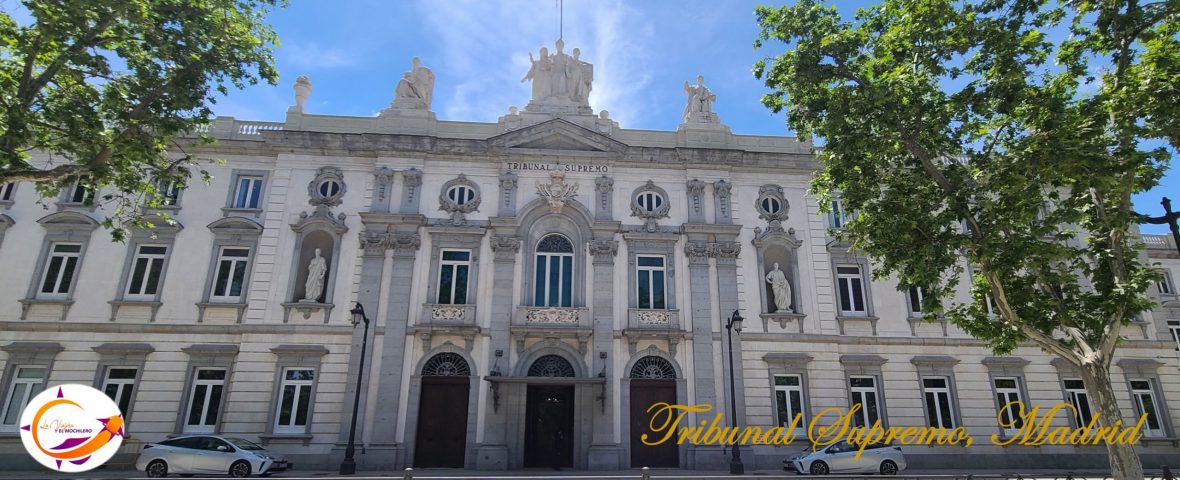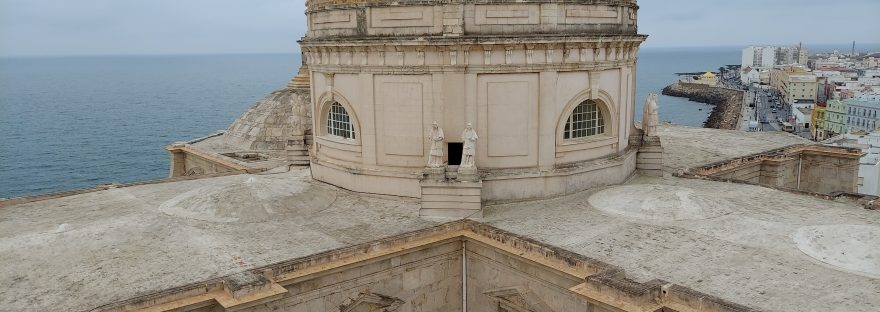Our interest in getting to know the Cathedral of Cadiz began with its dome, that golden dome that caught our attention with every photo shared through-out the cyber world. Always near the sea and visible from all points of the city.
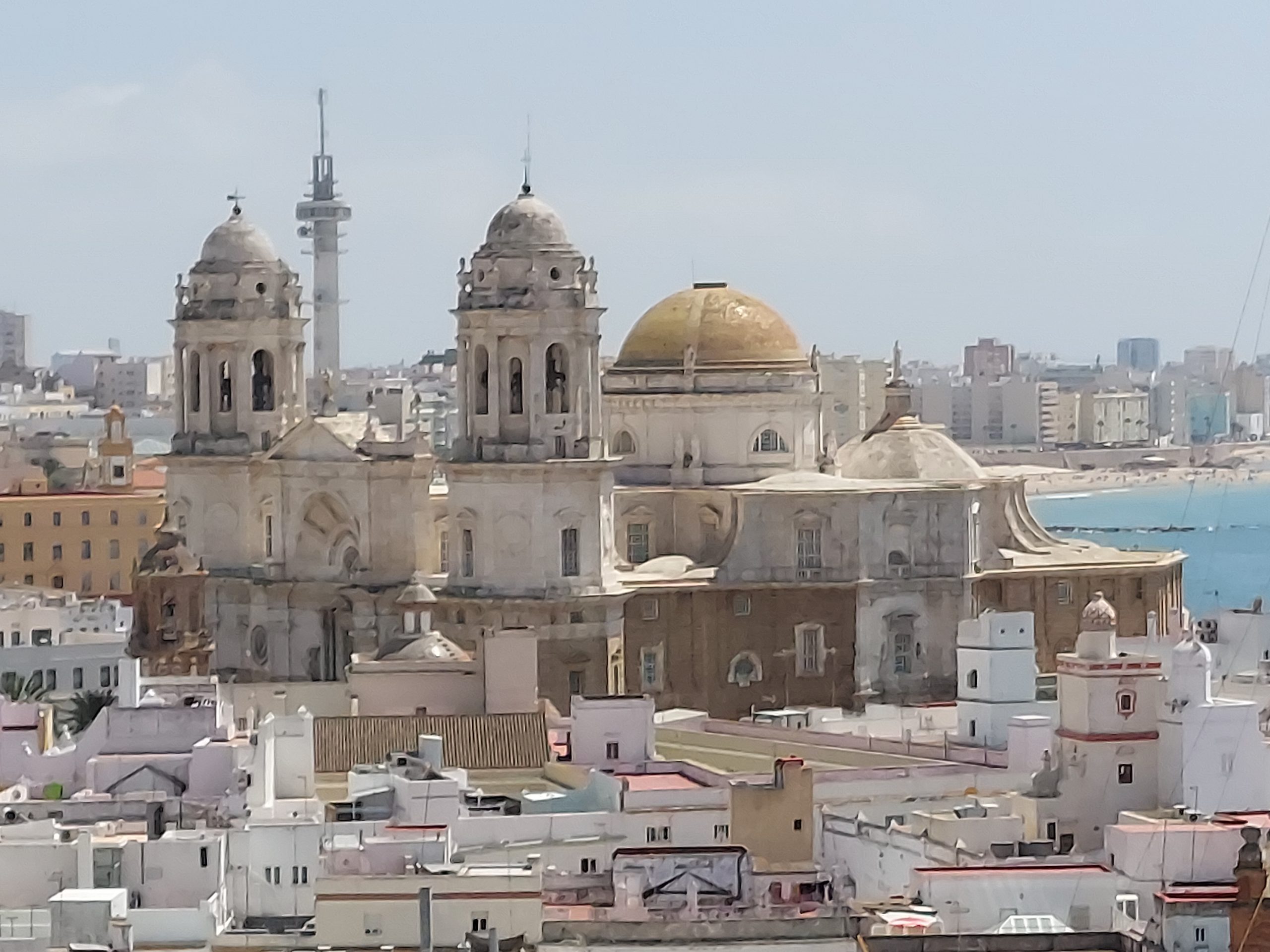
The Cathedral of Cadiz, is the episcopal see of the diocese of Cadiz and Ceuta, in Spain. It is called “Holy Cross (Santa Cruz) over the sea” or “Holy Cross over the waters” and as usually occurs, it is located in the historic center of the city. It was at the beginning of the 17th century that the construction of the New Cathedral was ordered, as opposed to the Old Cathedral, built in the 16th century over the old Gothic cathedral ordered by Alfonso X the Wise and burned by the Anglo-Dutch squadron in 1596.
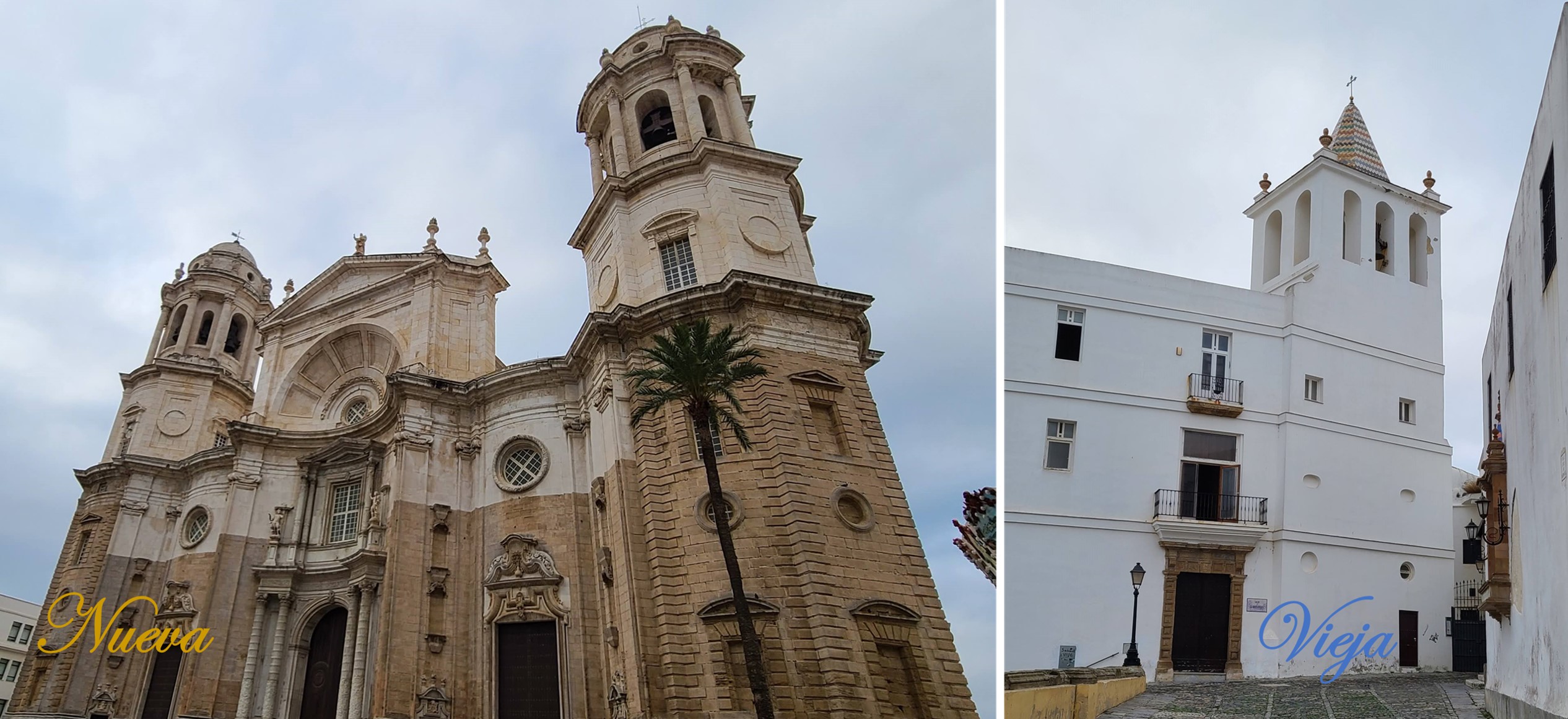
Being the first temple of the diocese, the construction of its Cathedral had to be up to the task. In addition, in the middle of the seventeenth century there was a very prosperous commercial boom in Cadiz, which motivated the desire to have a new and much more monumental Cathedral, which was at the level of the splendor of the city. This was due to the importance that Cadiz had acquired with the transfer in 1717 of the House of Trade of the Indies from Seville.
It can be said that in the Cathedral of Cadiz the baroque and neoclassical styles predominate. However, as its construction took 116 years, this allowed the intervention of different styles (baroque, rococo and neoclassical) used by architects throughout that time. Construction of the New Cathedral began in 1722 and was not completed until November 28, 1838.
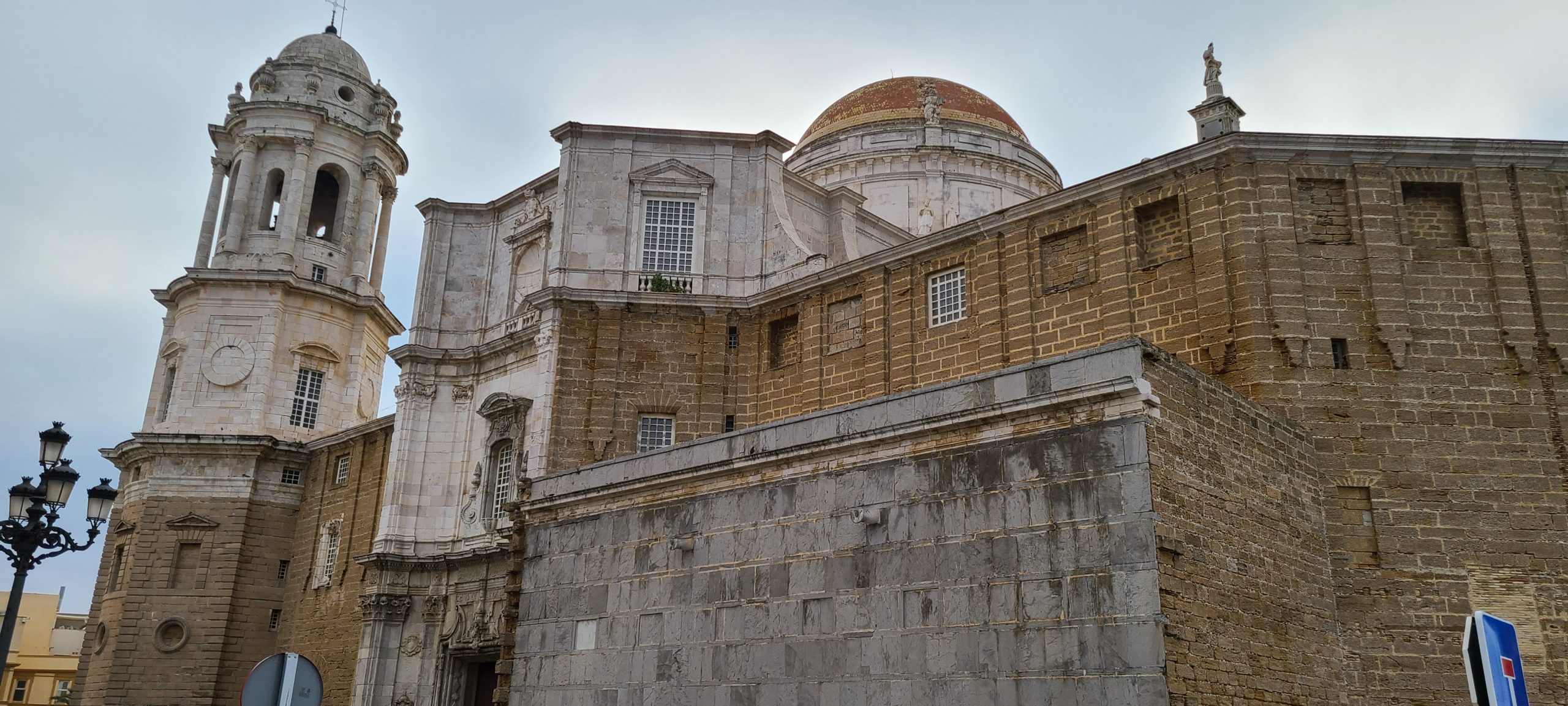
In addition, it should be noted that these constructions are always faced economic crises. In the case of Cadiz, as a consequence of the French invasions and later the loss of power over America. Such events contributed to the use of a variety of styles in its Cathedral. Likewise, the materials used in the construction also varied, thus we find Genoese marble for the different altars and doors, jasper, and limestone and oyster stone for the exterior walls.
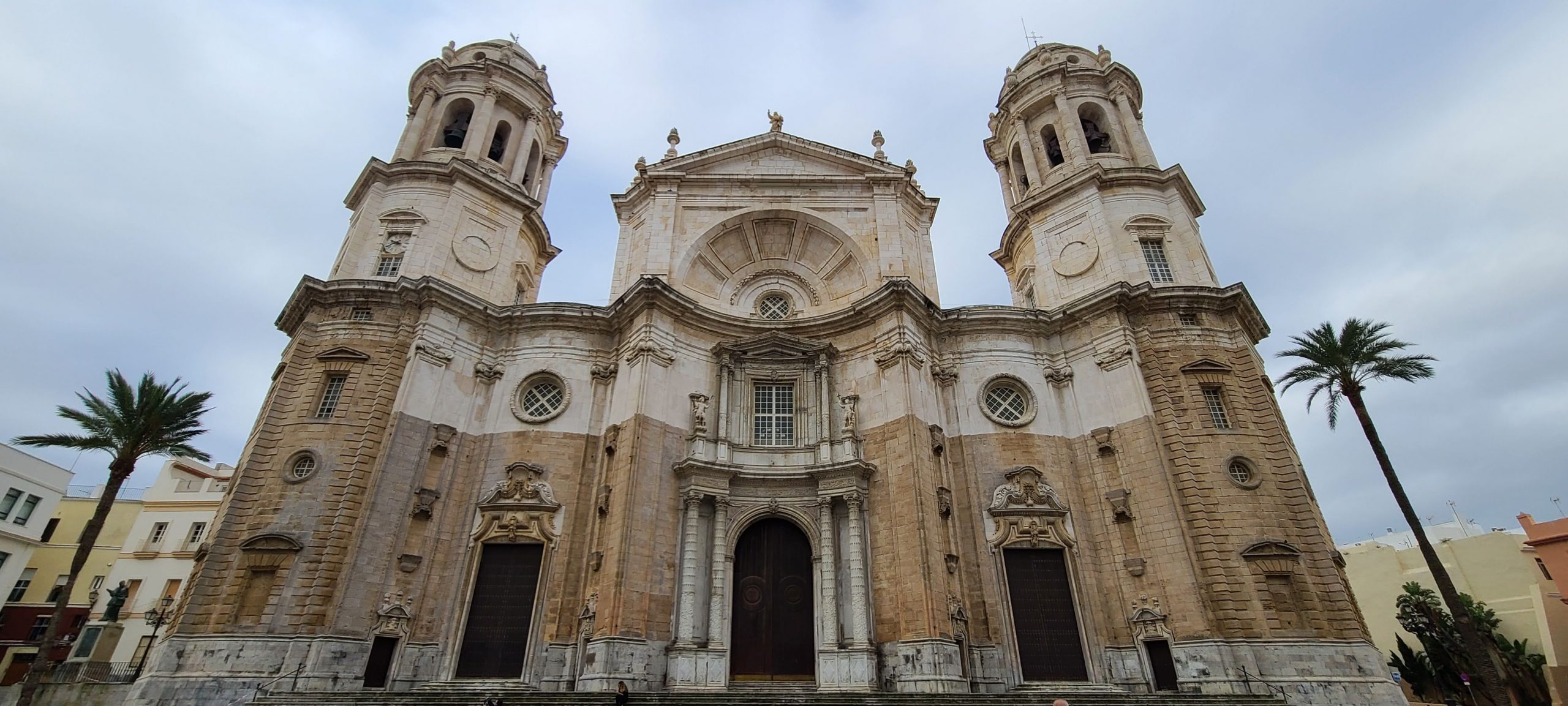
The main facade of the Cathedral of Cadiz is a combination of concave and convex forms, very characteristic of the baroque style. It has three porticoes, the central one being the most interesting. Immediately above is a large window flanked by the Patron Saints Servandus and Cermanus. A large arch is above the window, and further above the arch there is a triangular pediment where a sculpture of the Divine Savior is located. The lateral facades are identical, in marble and jasper with the doors of Corinthian order, dedicated one to Saint Cermanus and the other to Saint Servandus.
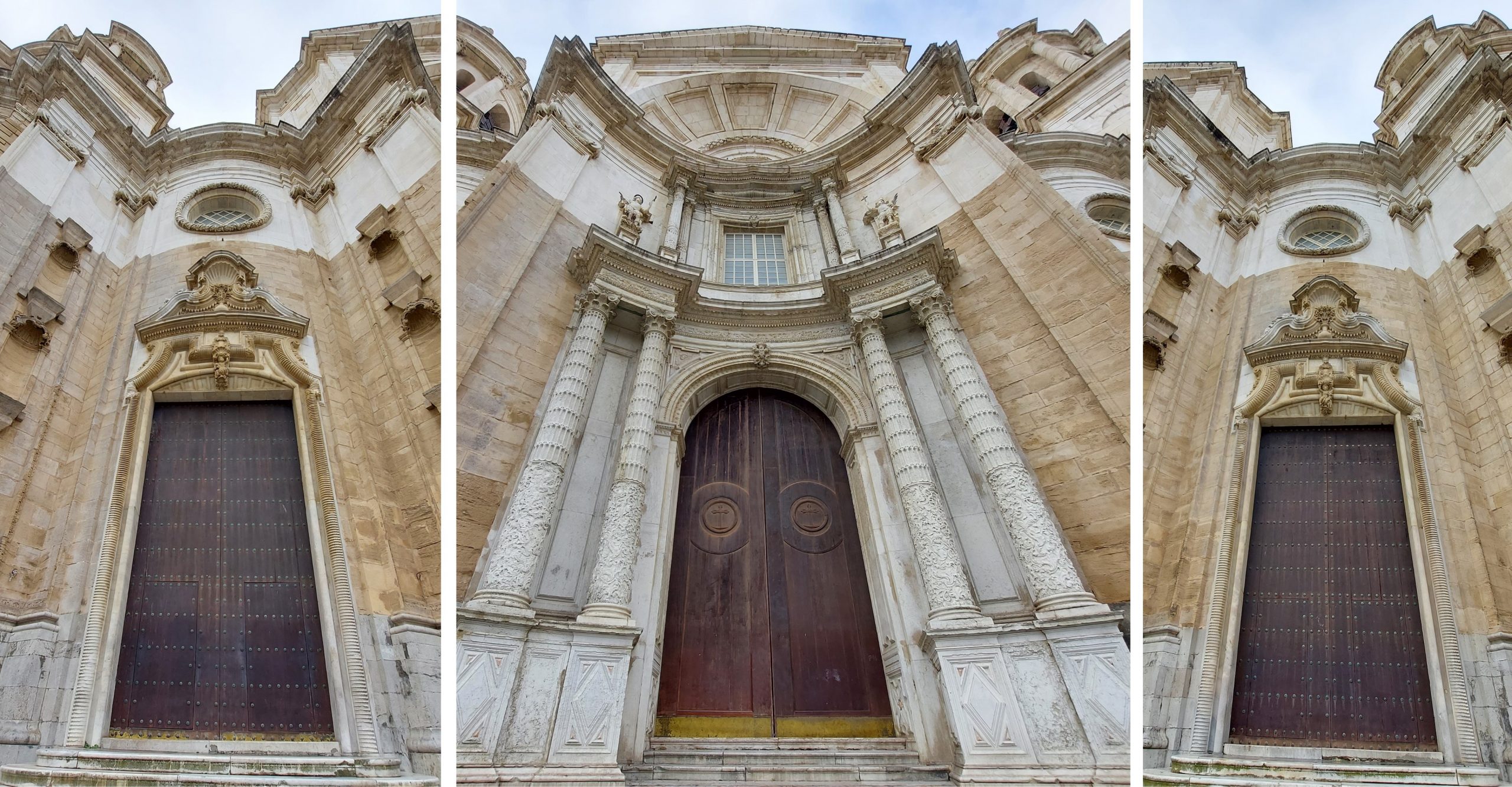
The towers on both sides of the façade end in a form reminiscent of an astronomical observatory. The fact that the Cathedral has such high bell towers is almost unsual. At that time the construction of high structures was forbidden as they became easy targets for enemies.
The cathedral of Cadiz has several domes, although there are two that stand out the most. One of them is the dome of the transept, composed of a drum and hemispherical cap, and its exterior is covered by golden tiles that during the day shines brilliantly.
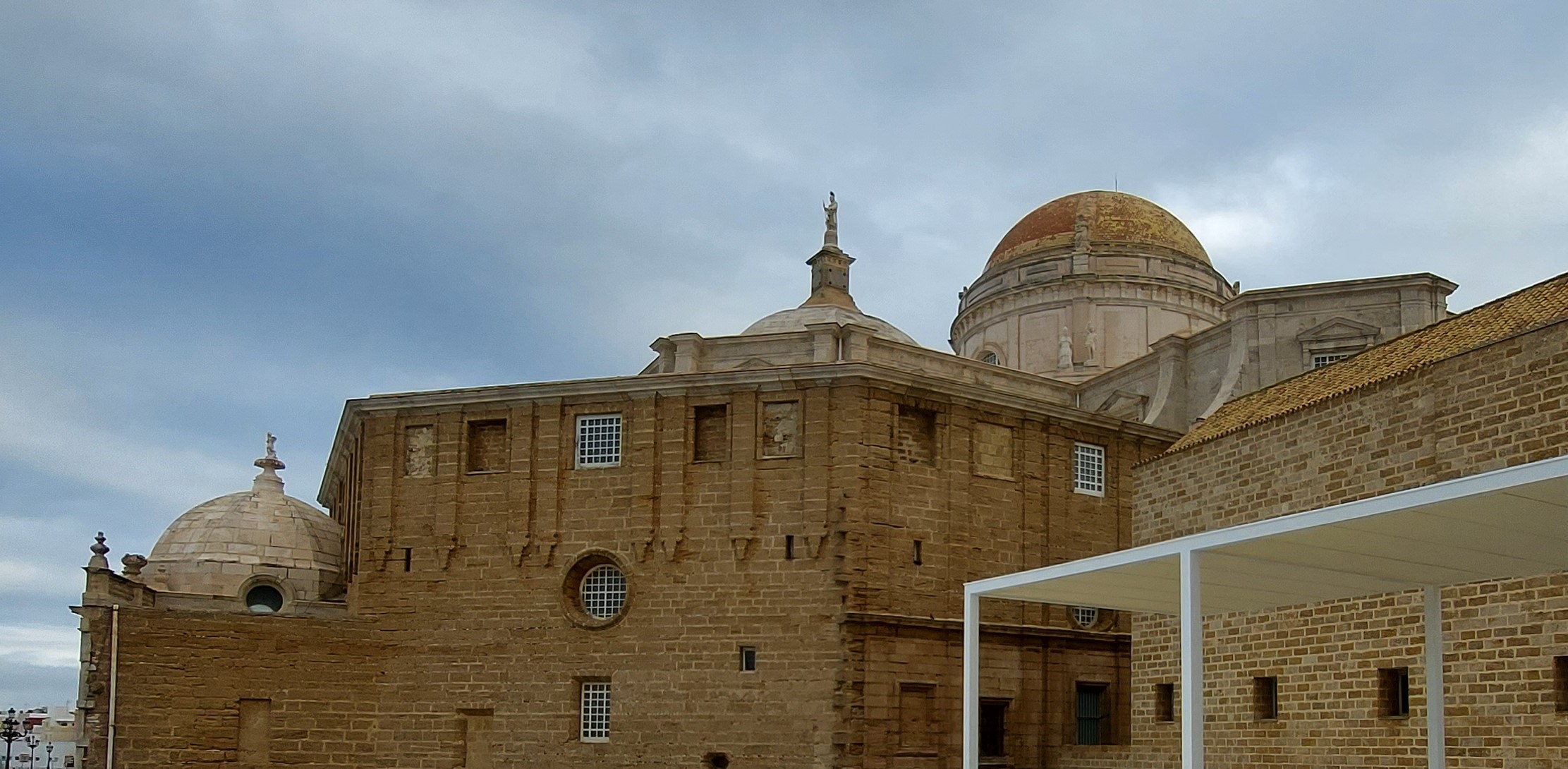
Next to the dome of the transept is another dome of smaller dimensions, located over the High Altar. Another smaller dome is further located over the chapel dedicated to house the relics.
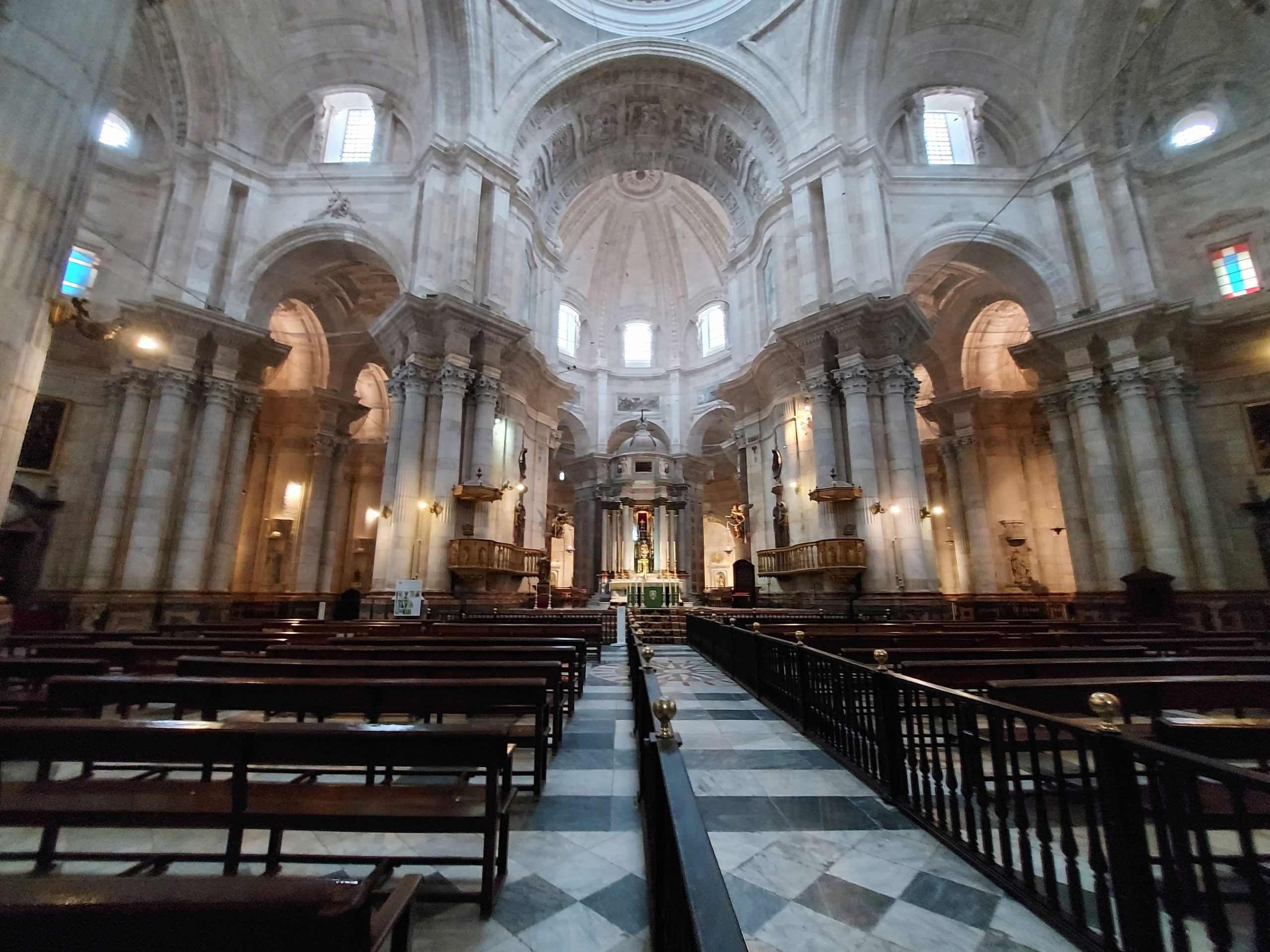
The layout of the interior of the Cathedral of Cadiz is in the form of Latin cross, divided in three naves, with the “crossing” finished off by a dome and with pentagonal ambulatory. The interior space is delimited by sets of Corinthian columns elevated on plinths, which is nothing more than the molding of square base that is under the base of the column or pilaster, on the pedestal. The use of vaults creates the roof in most of the building, many of them showing a rich sculptural decoration in bas-relief. The sagging vault also receives the popular name of “handkerchief vault” because of its resemblance to the inverse form of a wet handkerchief hanging from its vertices. It was widely used in the buildings of the baroque period.
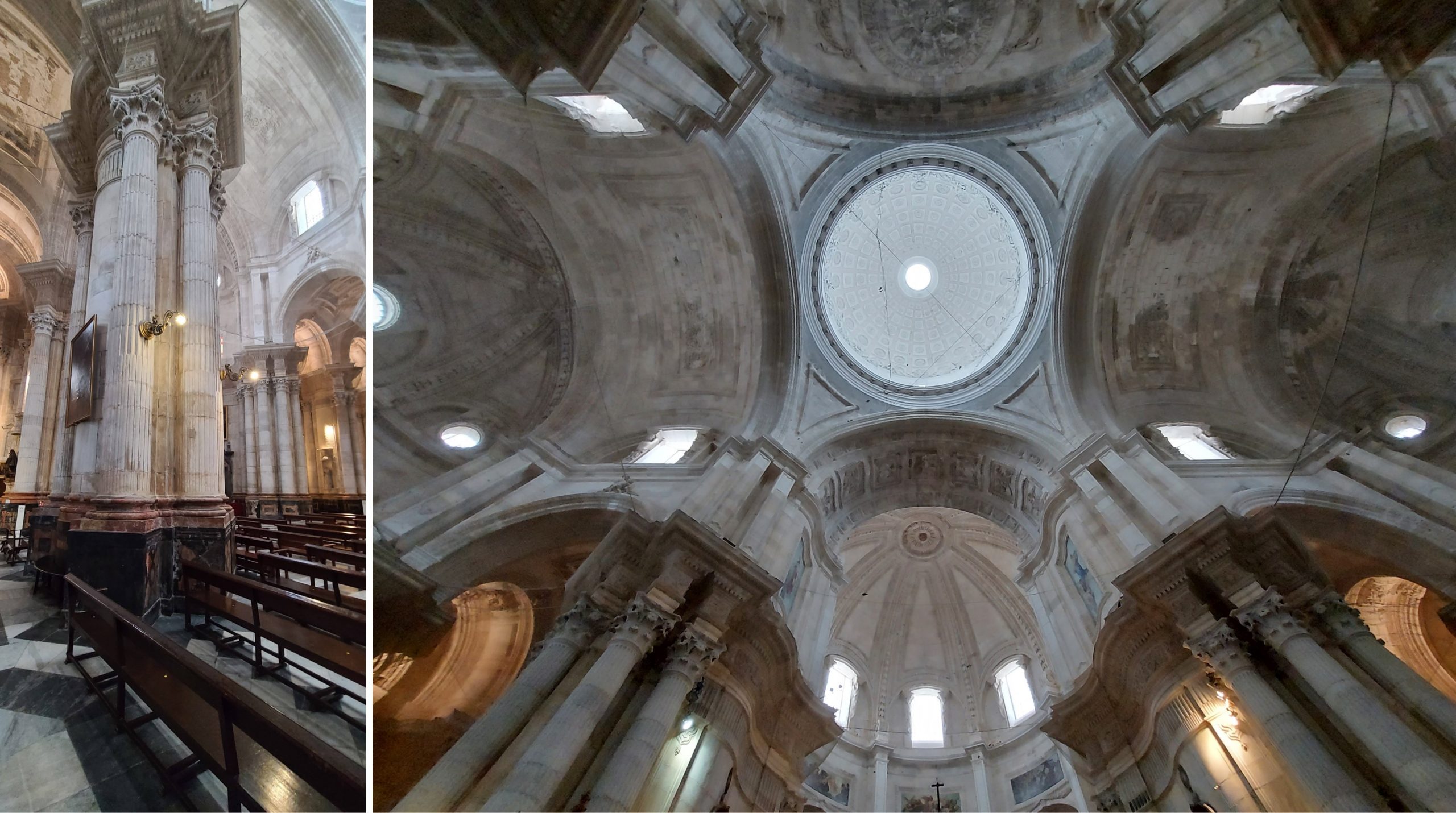
The altar is elevated and in a kind of a neoclassical style pavillion, dedicated to the Immaculate Conception.
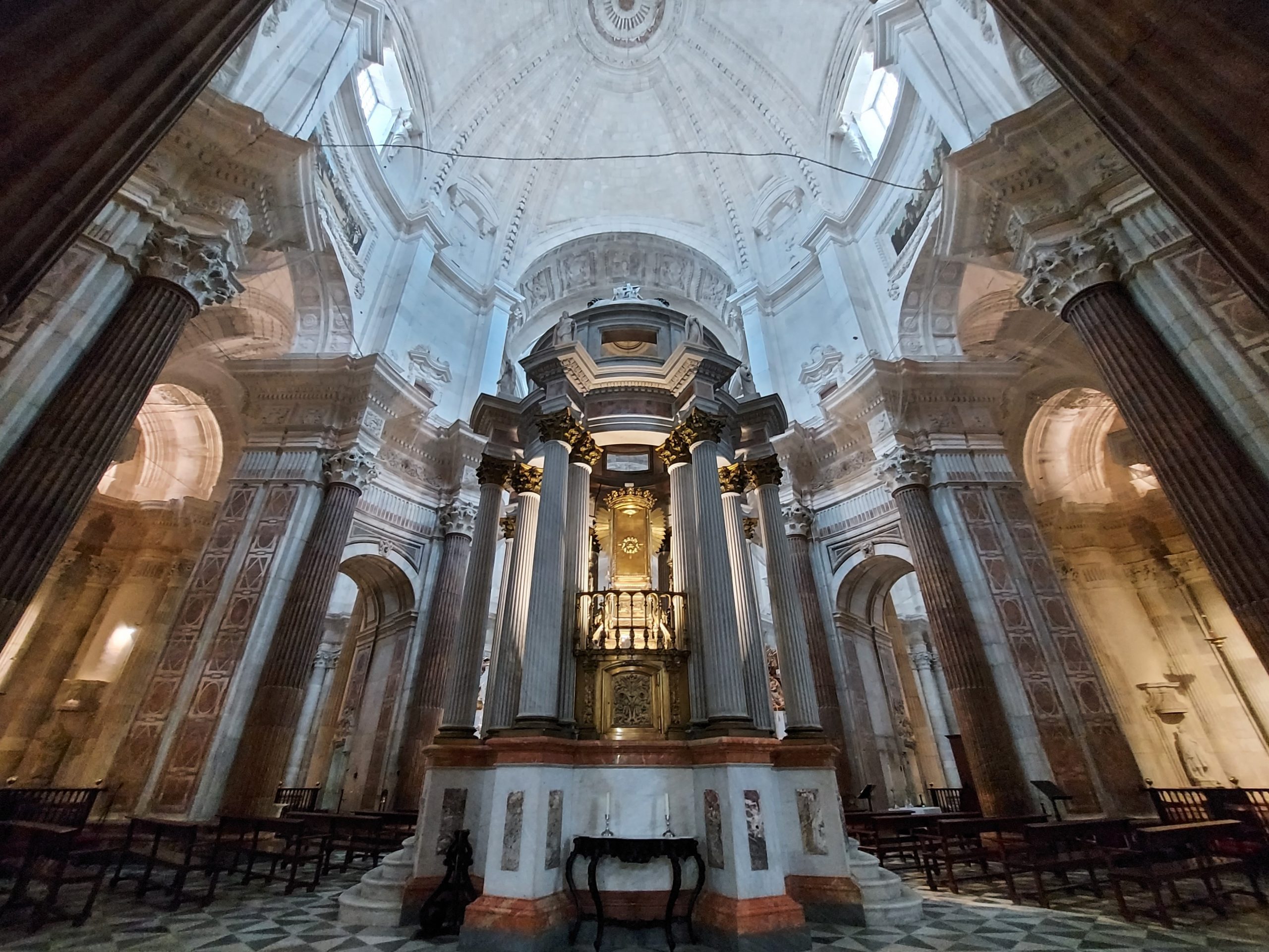
In all the perimeter of the temple the chapels are observed, that are fifteen, dedicated to diverse saints. The most outstanding chapel is that of Saint Sebastian with the sculpture by Luisa Roldán, as well as that of the Cádiz patron saints of Saints Servandus and Cermanus.
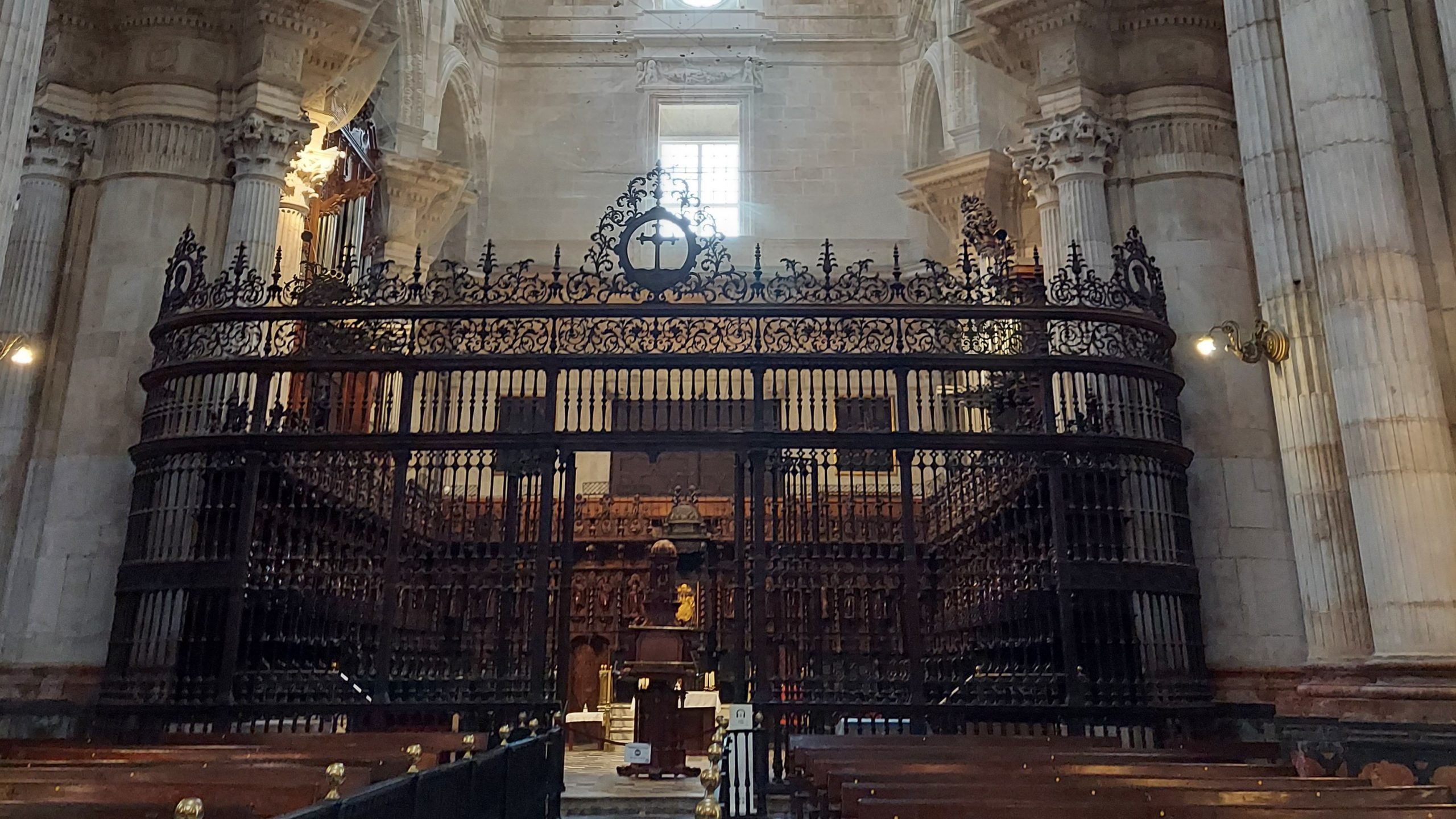
Another interesting element of the cathedral is its choir, located at the foot of the temple, in the central nave, in front of the main altar. The real works of art are the choir stalls, which are divided into two sections.
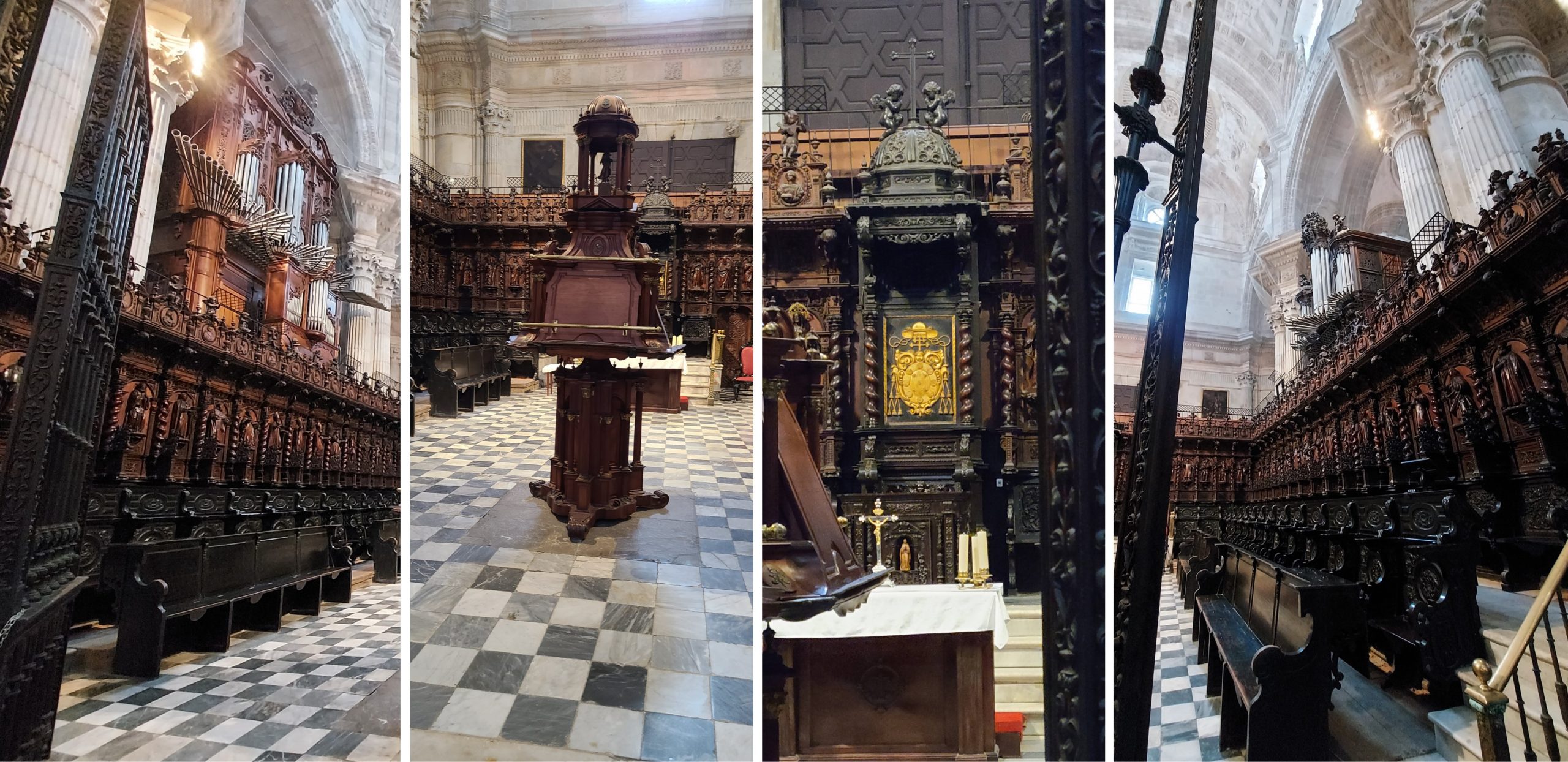
The two organs of the Cathedral of Cadiz are truly monumental. The oldest of them comes from the old cathedral of the Santa Cruz and was presumably built at the end of the XVI century or early XVII century. The other, more recent, is the work of the organ builders Otín and Roqués, inaugurated on the feast of the Immaculate Conception in 1870.
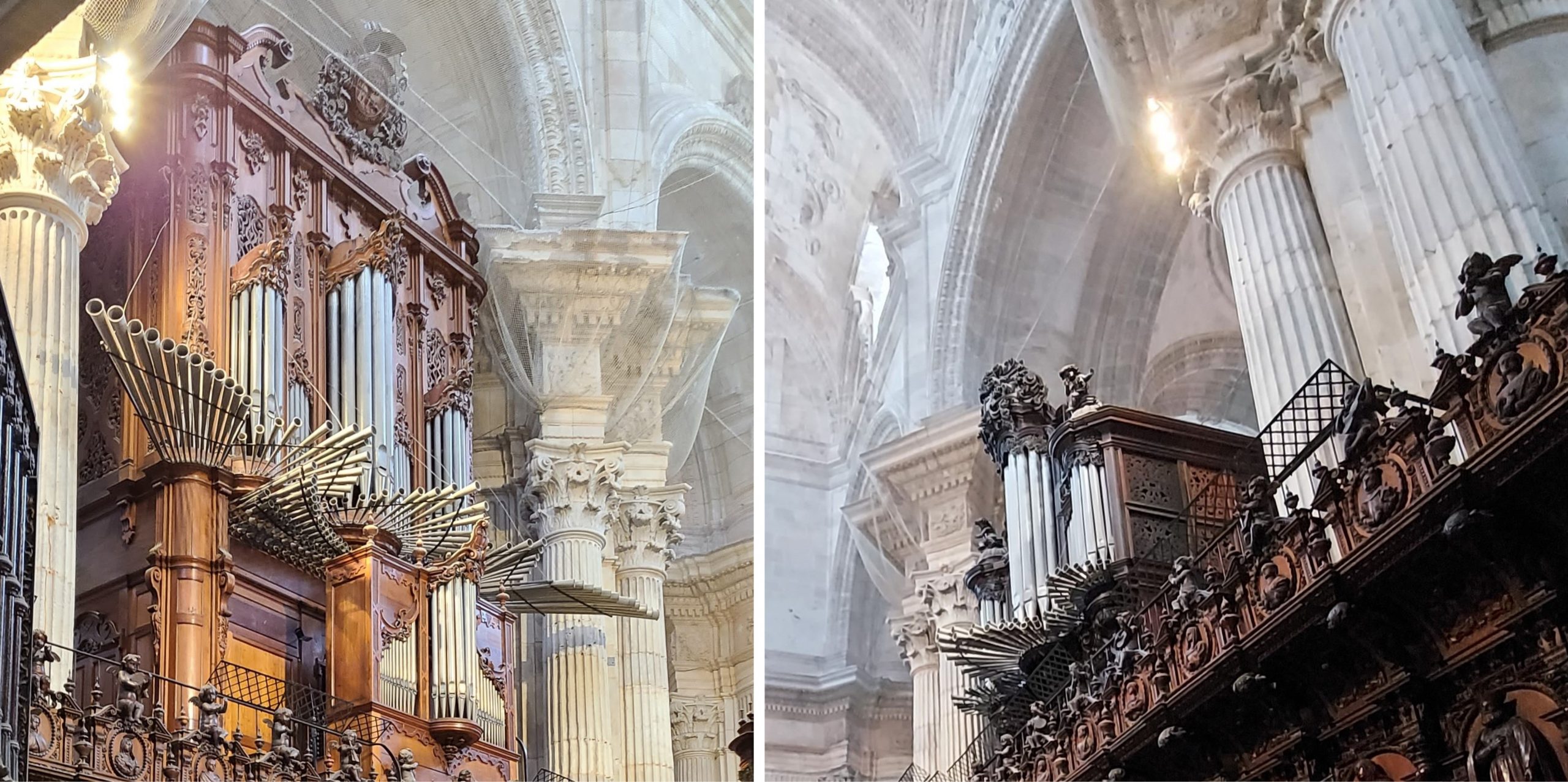
It closes the set of the Choir, a very beautiful grille divided in bodies, whose lateral doors are stamped by the effigies of the Saints Servandus and Cermanus.
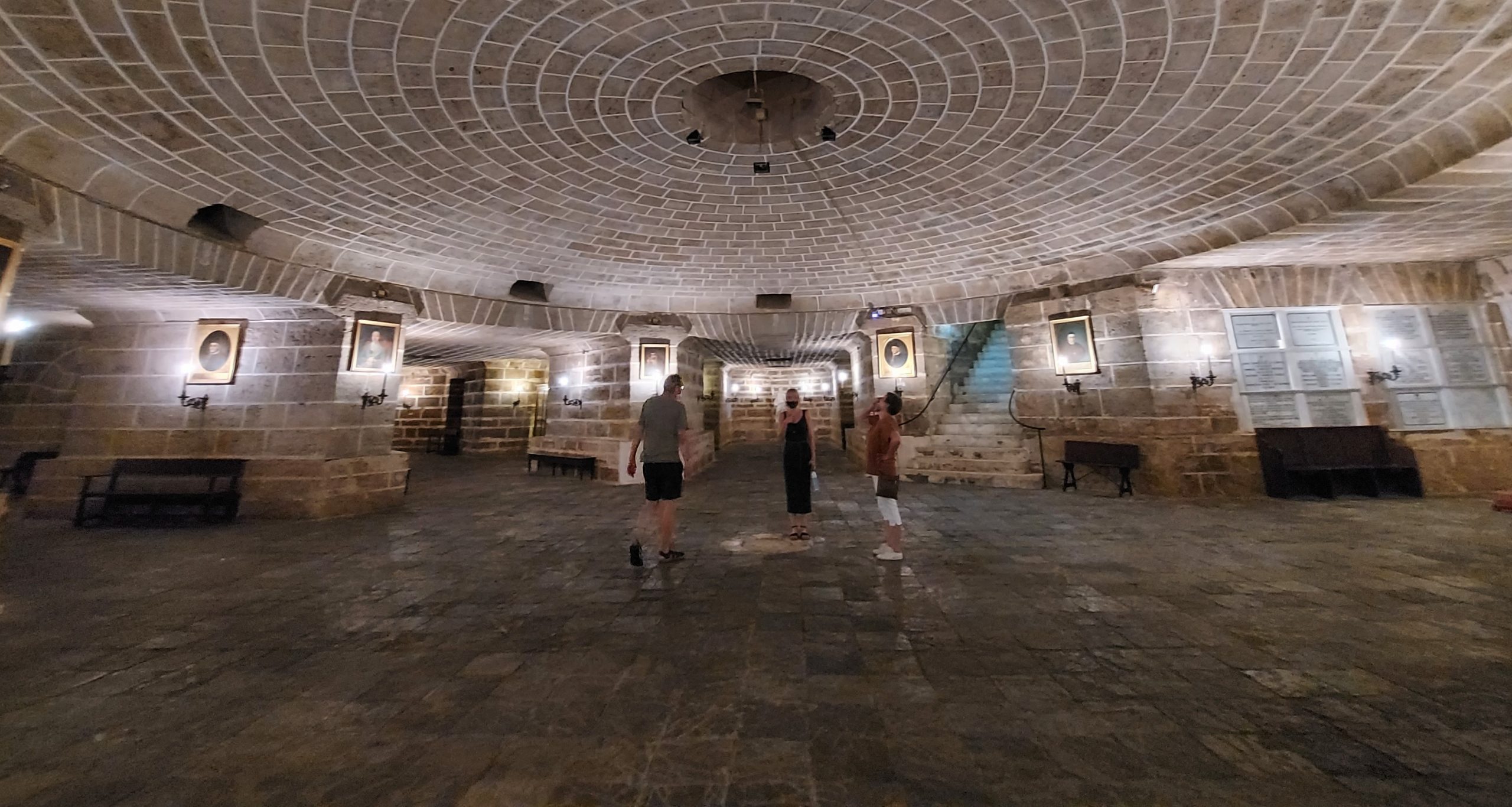
The first enclosure built in the Cathedral of Cadiz was the Crypt, between 1732 and 1730. It was made of oyster stone and is located under the main altar, located below sea level. It is a very sober area that contrasts significantly with the marble found in the upper part of the cathedral. It is in this crypt where some illustrious people from Cadiz are buried, such as Manuel de Falla or José María Pemán, as well as many of the bishops of the diocese. What surprised us most about this space was the flat vault of the central area, which can be somewhat overwhelming.
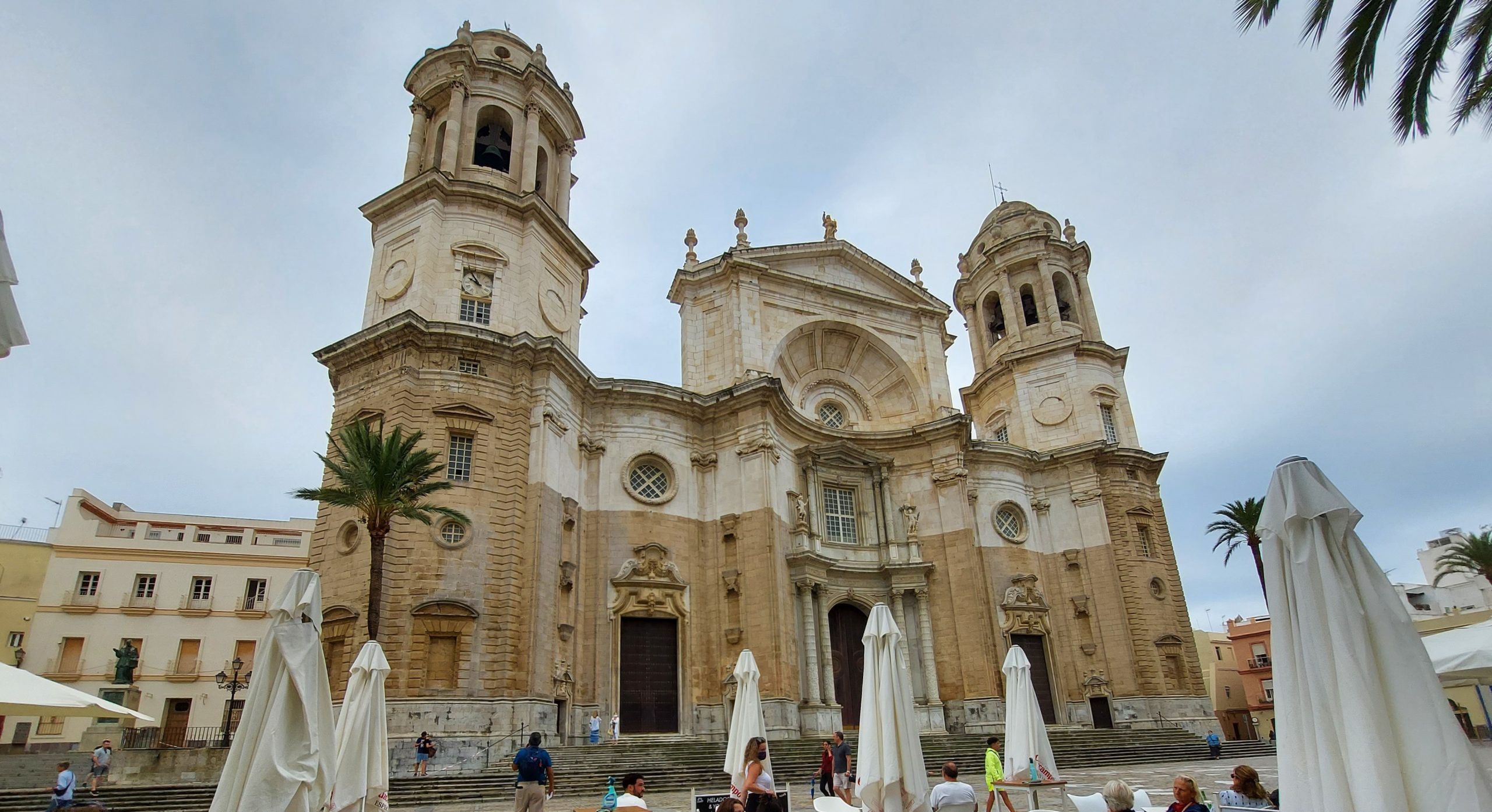
One of the most characteristic elements of the Cathedral of Cadiz is the Clock Tower. It is one of the twin towers of the cathedral, measuring 74 meters high. From that height you can enjoy the best panoramic views of the city, as well as observe much more closely some architectural elements that characterize this cathedral.
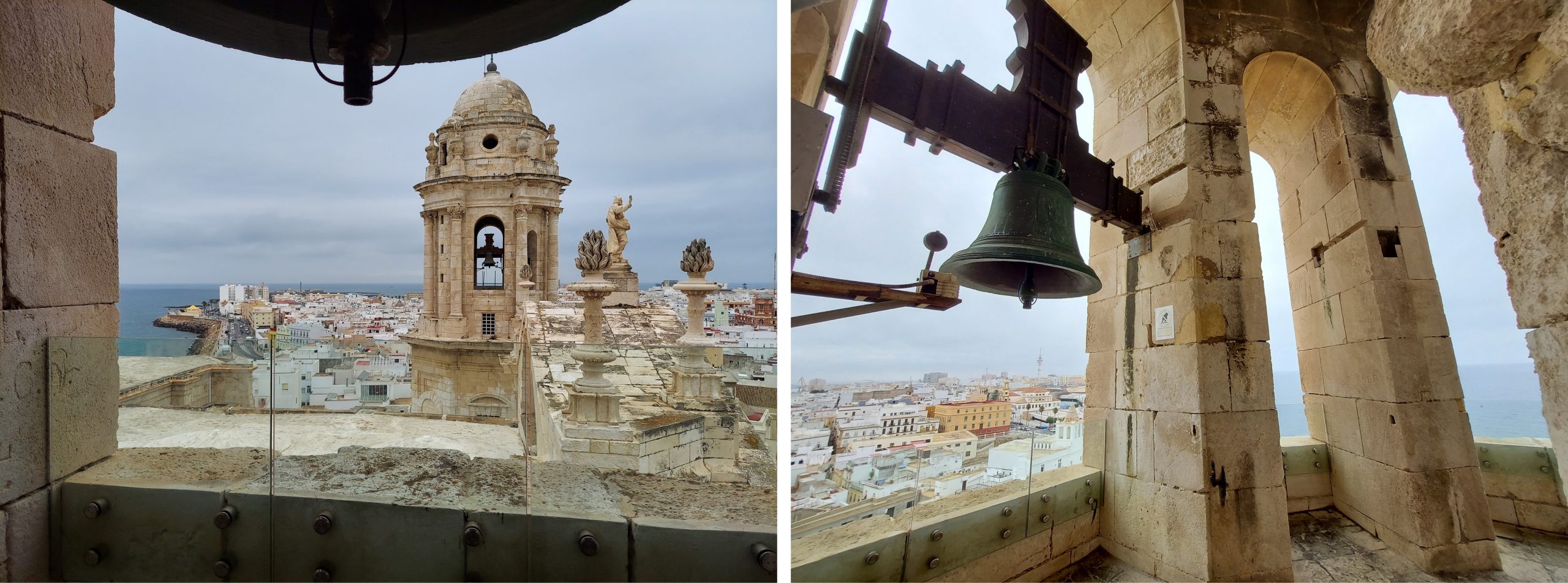
The clock, which was introduced in the nineteenth century and for decades served to tell time to the people of Cadiz, until it ceased to have use in the mid-twentieth century.
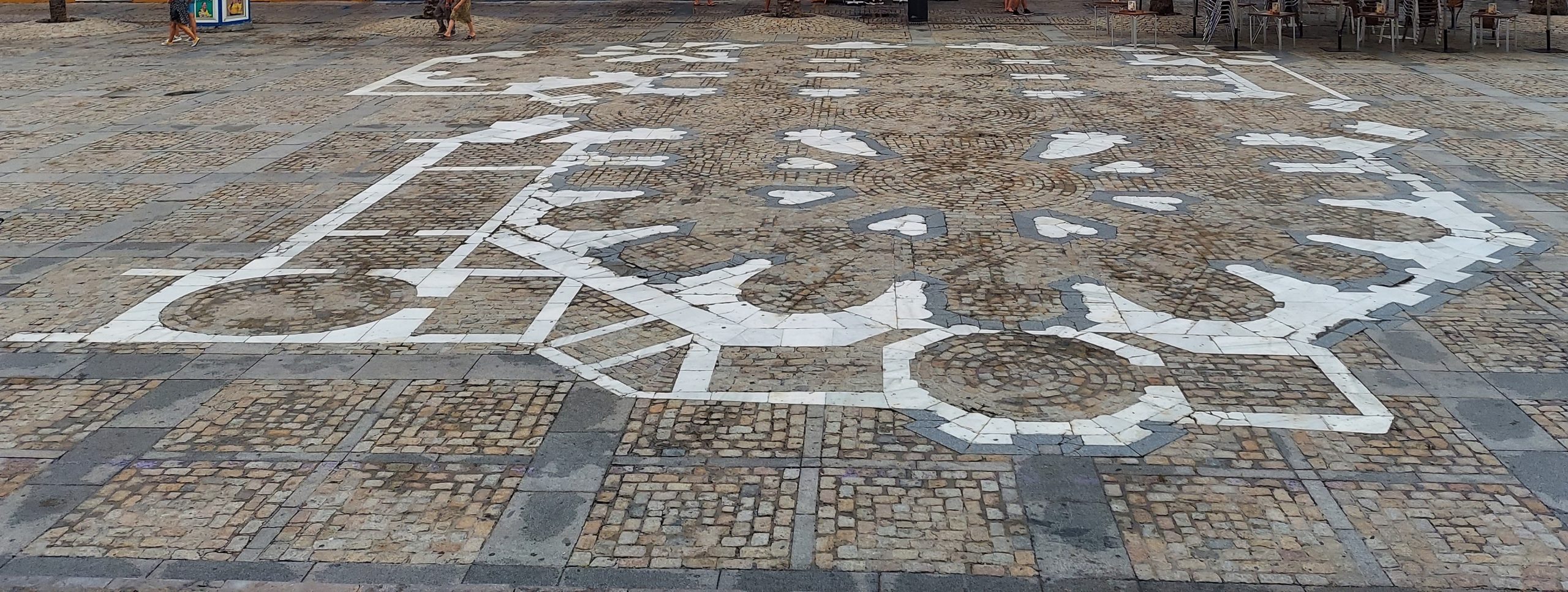
From the top of the tower you can contemplate the exact layout of the cathedral, which is reflected in its square.
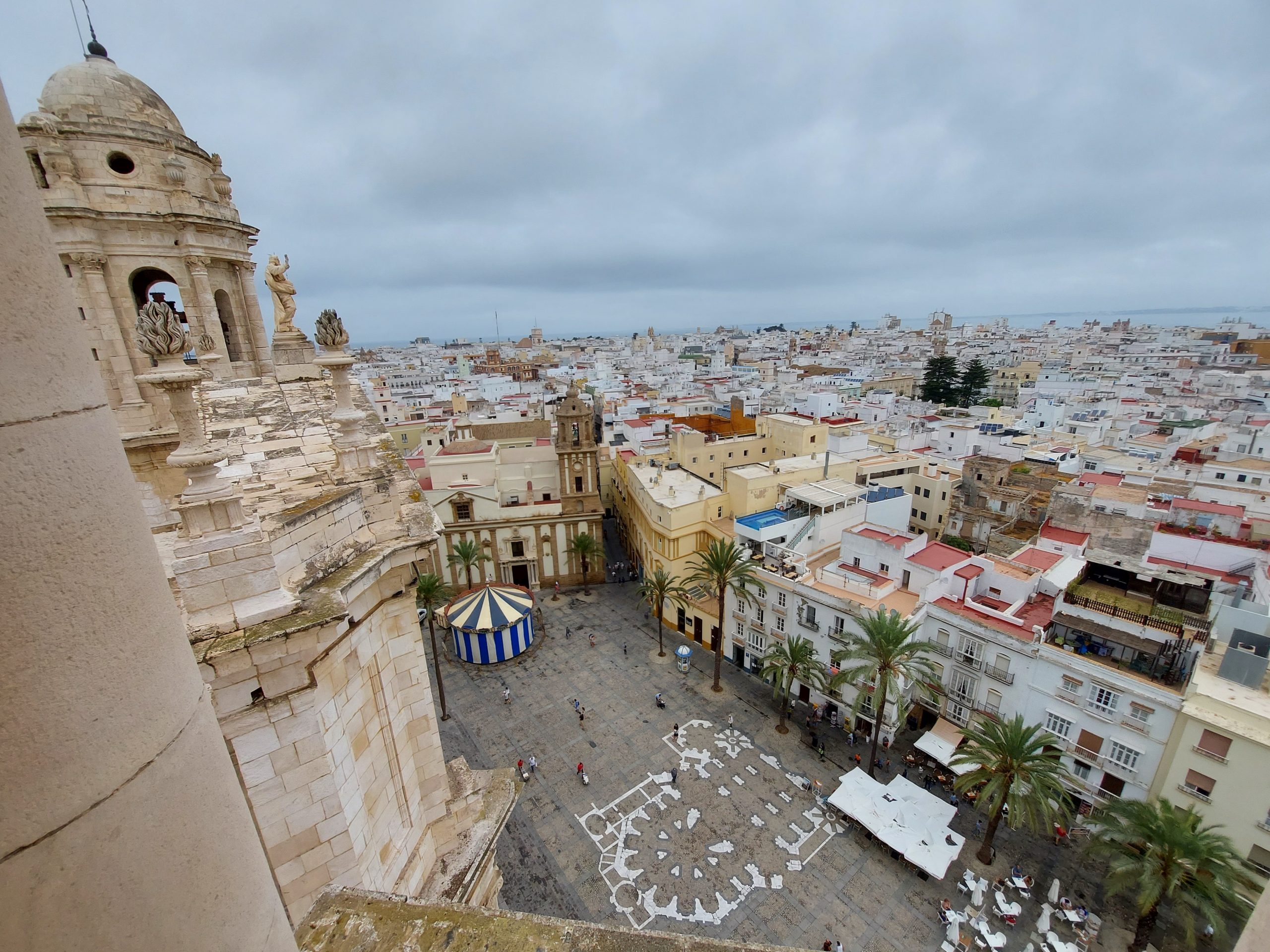
The Cathedral of Cadiz, one of the main tourist attractions of the city of Cadiz and a must-see.
Resources:
- https://catedraldecadiz.com/exterior-de-la-catedral/
- https://owaytours.com/guia-de-cadiz/monumentos-cadiz/la-catedral-de-cadiz/https://es.wikipedia.org/wiki/Catedral_de_la_Santa_Cruz_de_C%C3%A1diz
- https://viajeronomada.com/la-catedral-de-cadiz/
